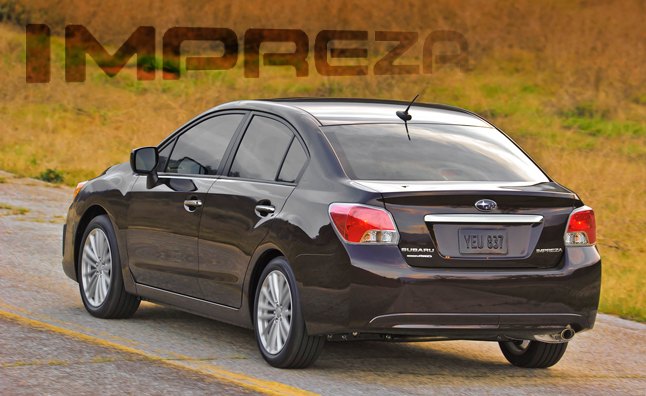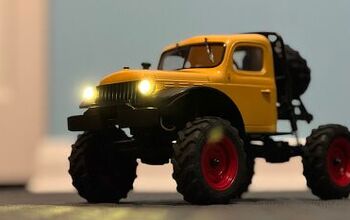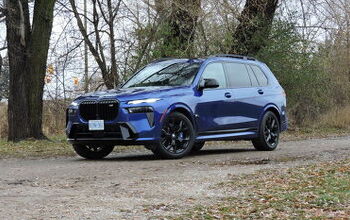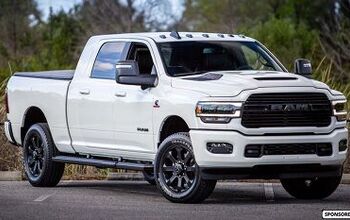Top 10 Compact Sedans With the Biggest Trunks

Compact cars are affordable, they’re usually a lot of fun to drive and can deliver impressive fuel economy numbers. As government regulators push for ever-greater efficiency, small sedans and hatchbacks are becoming increasingly important.
While their list of virtues may be long, C-Segment cars do have some liabilities. For starters they’re usually not very spacious. Tall passengers can find their back seats about as roomy as a straight jacket. Likewise, luggage space is severely constrained. No one buys a Civic for hauling sheets of plywood.
Still, compacts are frequently called upon to lug loads of junk to upstate colleges; they’re asked to handle an extended family’s worth of Christmas shopping during the holidays; and they’re even enlisted to serve truck duty by hauling bags of topsoil or ready-mix concrete from home-improvement stores. Like mini moving trucks, drivers put these vehicles through their paces, and even though they may not have a lot cargo or passenger volume, room is an important factor to consider.
Here’s a list of the Top 10 Small Sedans with the Most Trunk Space.
There’s something magical about the number 12. There are 12 months in a year. Jesus had 12 disciples. There are 12 hours of day and 12 of night. A dozen is comprised of 12. And then there’s the Subaru Impreza sedan. It offers an even 12 cubic feet of trunk space. Perhaps engineers were trying to exploit some sort of cosmic connection. But clearly they failed because the car ends up dead last on this list, losing out to the Geritol-grade Corolla by a third of a cube. Better luck next time.
Making up for this deficiency the Impreza is also offered as a hatchback. Buyers opting for this body style are treated to nearly 23 cubic feet of junk-accommodating trunk space. That’s enough room to handle an inflatable walrus, two crates of mango chutney and a full series of John Wilkes Booth collector’s plates with enough room left for a miniature pony*.
*Your utility may will vary
While Subaru’s Impreza tries to tap into the ethereal power of the number dozen, Toyota’s small-car offering is all about Lawrence Welk reruns, pill organizers and walkers with tennis balls on their feet. Compact cars are supposed to be youthful and fun but the Corolla is weary and worn. It’s the C-Segment equivalent of an octogenarian.
The car may be old (and it is) but this senior citizen still has enough vigor to top the Impreza in trunk space, and maybe for an afternoon game of backgammon. Toyota’s compact sedan offers ennui-seeking clientele 12.3 cubic feet of trunk space. It’s perfect for hitting up drive-through pharmacies or stocking up on generic-brand diet cola.
If customers want more space they can opt for the Toyota Matrix hatchback, a fraternal twin to the Corolla. It has about 20 cubic feet of cargo room in its hold.
Barely edging out the Corolla is Honda’s refreshed Civic. By all measures the previous generation was a satisfactory small car, but that’s not good enough in today’s fearsome market. Among the automotive press it landed with a dull thud, like dropping an Easter ham on a hardwood floor. Thankfully for customers the 2013 model builds on the successes of its predecessor and fixes many of its faults.
However, some cynical journalists might say Honda didn’t go far enough with its update of the venerable Civic. One are they certainly could have improved is the trunk. It only offers 12.5 cubic feet of room, more than its arch-rival from Toyota, but only good enough for an 8th-place finish.
If you want more space in a C-Segment Honda sedan too bad. Like dial-up internet in 1994 this is the best there is. The coupe version of the car has even less space, offering just 11.7 cubic feet.
Chrysler may not have hit the bull’s eye with its reborn Dart, but they came closer to the mark than they have with any previous compact car. Remember the Dodge Caliber? It’s a lot like the Holocaust; people are reminded to NEVER FORGET.
Avenging that automotive tragedy is the Dart. It looks good, is solidly built and offers buyers a host of customization options. It’s even fun to drive. From a practicality standpoint it offers a very large interior for its class, more than 97 cubic feet of volume for passengers; its trunk space ain’t bad, either. The car serves up 13.1 cubes, which tops much of the Japanese competition.
Barely edging out the Dart is Ford’s Focus. In sedan form this Blue Oval small car delivers 13.2 cubic feet of trunk space. The difference between the Dodge and Ford is academic at most. In real-world use drivers would probably be hard pressed to notice that extra one tenth of a cubic foot. It’s like trying to tell the difference between canola oil and palm oil… both are poor substitutes for 5W-30. If you need to haul a lot of stuff get a minivan.
The Focus is a scrappy little sedan but if economy-minded motorists want some extra space they can opt for the hatchback model, which has nearly 24 cubic feet of room, enough to clean out a few spice vendors at a Turkish bazaar.
Unfortunately all of that heist-enabling convenience comes at a price. The Focus hatchback is $3,000 more expensive than the sedan model. Now that’s “hawayej” robbery with a capital “H.”
The Focus barely beat the Dart but Hyundai’s Elantra tops the Ford by a sizeable margin. Its victory is similar to how Germanic tribes crushed several Roman legions at the Battle of the Teutoburg Forest more than 2,000 years ago, minus all of the bloodshed of course.
The Elantra sedan offers 14.8 cubes of space in its cargo hold, that’s almost 15 cubic feet, nearly enough to graduate cum laude but not quite. Thanks to sub-standard grades in pre-calculus class the honor roll is just out of reach.
Hyundai must think customers like cars with ghetto booties, disproportionately large backsides, because the Elantra has a sizably bigger trunk than the Dodge Dart but its interior is a couple cubic feet smaller.
Topping its corporate sibling by the film of bugs on its grille is the Kia Forte. It beats the Hyundai Elantra by just one tenth of a cubic foot in trunk space. Don’t blame us; someone had to be the smarter sibling.
The two cars ride on an identical 106.3-inch wheelbase but the Kia as a slightly larger interior and a couple extra inches of back-seat legroom. Perhaps styling has something to do with the Forte’s slight advantages. Like parents always say to screaming toddlers, “life isn’t fair;” in this comparison Kia gets the nod over Hyundai.
Cruising to a podium finish is the all-around-competent Chevrolet Cruze. GM’s product planners may have failed their spelling lessons but they figured out how to build a solid small car. It offers customers an even 15 cubic feet of trunk space, enough for a bronze medal in this Top 10 list. What more is there to say?
Second place is just the first loser, right? Not so fast. With 15.1 cubes of trunk space anyone driving a 2013 Nissan Sentra can feel like a winner. Along with its generously portioned cargo hold the car also offers a commodious interior. Rear-seat passengers are treated to a very healthy 37.4 inches of legroom.
When it comes to trunk space this small Nissan may have been pipped at the post by one other car, but the Sentra’s got some other stuff going for it. First, a super efficient continuously variable transmission (CVT) makes the most of every drop of gasoline, allowing its 130-horespower engine to deliver 30 miles per gallon in the city and up to 40 on the highway. The car also comes with a standard AM/FM/CD audio system so you can listen to your copy of Now That’s What I Call Music 7. Destiny’s Child never sounded better!
Volkswagen is rolling right along, earning first-place honors in yet another AutoGuide Top 10 list. And once again the Jetta leads the field. Last time around it offered the most back-seat legroom, enough space to conceive a child… or even triplets. Today it delivers the most trunk space among these compact cars, a whopping 15.5 cubic feet. On top of these wins VW’s popular Passat TDI also offered the greatest highway range in a group of 10 large sedans. Those are some mighty impressive laurels and we suspect it’s time the company did a little resting. Maybe the competition will have a chance to catch up.
The Jetta is a space champ, just like the United States in 1969 when they beat the Soviets to the moon. It’s also offered with a wide range of engines from a 2.0-liter base powerplant that buyers should stay at least 20 miles away from, to a mass-market five-cylinder unit, to a diesel, to a gasoline turbo; literally there’s something for everybody, and with such a big trunk you can bring everybody’s stuff, too.

Born and raised in metro Detroit, Craig was steeped in mechanics from childhood. He feels as much at home with a wrench or welding gun in his hand as he does behind the wheel or in front of a camera. Putting his Bachelor's Degree in Journalism to good use, he's always pumping out videos, reviews, and features for AutoGuide.com. When the workday is over, he can be found out driving his fully restored 1936 Ford V8 sedan. Craig has covered the automotive industry full time for more than 10 years and is a member of the Automotive Press Association (APA) and Midwest Automotive Media Association (MAMA).
More by Craig Cole










































Comments
Join the conversation